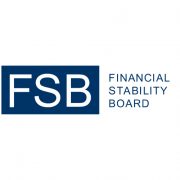FSB publishes global regulatory framework for cryptoassets
The Financial Stability Board (FSB), an international body monitoring the global financial sector, has published its regulatory framework for cryptoasset activities.

FSB publishes global regulatory framework for cryptoassets
The news comes exactly a year after it had published a statement calling for the need to regulate the crypto industry on an international level.
“The events of the past year have highlighted the intrinsic volatility and structural vulnerabilities of crypto-assets and related players,” the FSB says in a statement. “They have also illustrated that the failure of a key service provider in the crypto-asset ecosystem can quickly transmit risks to other parts of that ecosystem.”
It adds that the framework takes into account the “lessons” from the past year as well as feedback received during its public consultation phase, and consists of two distinct sets of recommendations – one for the regulation, supervision and oversight of cryptoasset activities and markets, and the other for “global stablecoin” arrangements.
The FSB has particularly strengthened recommendations in three areas – ensuring adequate safeguarding of client assets; addressing risks associated with conflicts of interest; and strengthening cross-border cooperation.
It adds that they do not cover all specific risk categories related to cryptoassets, and outlines that Central Bank Digital Currencies (CBDCs) are not subject to these recommendations.
Alisa DiCaprio, chief economist at R3, says the announcement “proves the industry is moving in the right direction”.
“Events of the past year have shown that crypto can be a high-risk asset that would benefit from greater transparency and capital requirement measures,” DiCaprio says.
“So we hope the FSB’s recommendations serves as a platform for bridging the gap between the crypto sector and the safeguards associated with traditional finance.”
The global framework includes a workplan that the FSB has developed in collaboration with standard-setting bodies (SSBs) for 2023 and beyond, and will continue to collaborate in promoting globally consistent regulation. If required, they will even consider need for further guidance or standards through monitoring implementation status at jurisdictional level.










































